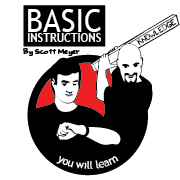So far, I have described my thoughts about ozamataz up to the point where I asked whether one could attract that kind of self-sustaining fan participation, and if so, how. This is also the point at which the Muse, or the Guardian Angel, or the Collective Subconscious, or Something, stepped in. Perhaps it was the Great Oz himself.
Having worked out something of the nature of ozamataz, I asked my brain: ‘OK, brain, what is it that makes some things have ozamataz when others don’t?’
And my brain, without missing a beat, obligingly answered: ‘Legosity.’
I was duly annoyed, for I then had to figure out what legosity was. My brain is cryptic and has no manners, and seldom troubles to explain itself.
The one thing my brain did deign to tell me is that legosity has something to do with Lego. This made sense on the face of it. Lego toys have an ozamataz of their own. They have inspired movies, games, theme parks, and of course, the imaginations of millions of children the world over. The manufacturer’s recent habit of producing specific single-purpose Lego sets like model kits, which hardly fit together with other Lego and are hardly intended to, is most regrettable. These kits tend to take up shelf space at the toy shops and displace the kind of Lego that you can really play with. But the original bricks and doors and windows, Lego people and Lego cars and Lego trees, and so on – those are still available, and you can do anything with them. Nowadays, you can even buy Lego with moving parts and electric motors, and build Lego machines that can be controlled via computer. There are Lego robots in the world, and serious men with doctorates in the hard sciences have been known to play with them.
As the unfortunate history of the kit-model kind of Lego shows, it is not so much the brand name, or even the mechanical ingenuity of Lego that gives the toys their unique quality. It is the concept. At bottom, Lego consists of a whole range of bits and pieces, all designed to fit together easily and without fuss, so that they can be used to build anything the imagination can conceive. You do not have to be a skilled carpenter, or a watchmaker, or know how to build ships in bottles, to build houses and cities and fairy castles out of Lego. The skill in your fingers (especially a child’s fingers) ceases to be a limit on what you can achieve, and the mind is set free to soar.
Even the name Lego is well chosen, and means, I think, more than its inventor intended. We are assured that it comes from the Danish phrase leg godt, ‘Play well’. But it is also Latin and Greek, and in those languages the word has a wide and subtle range of meanings that reach right down into the guts of the human psyche. [Read more…]











Recent Comments